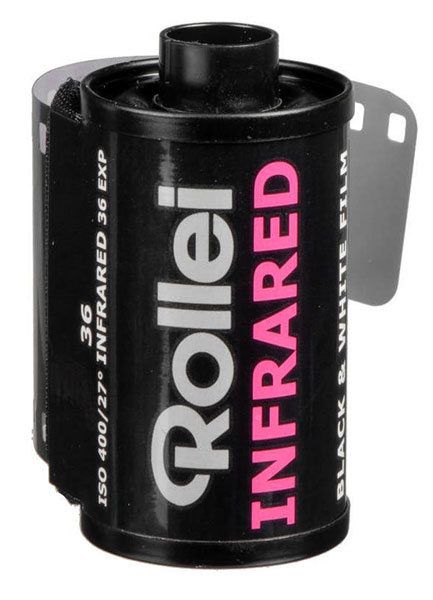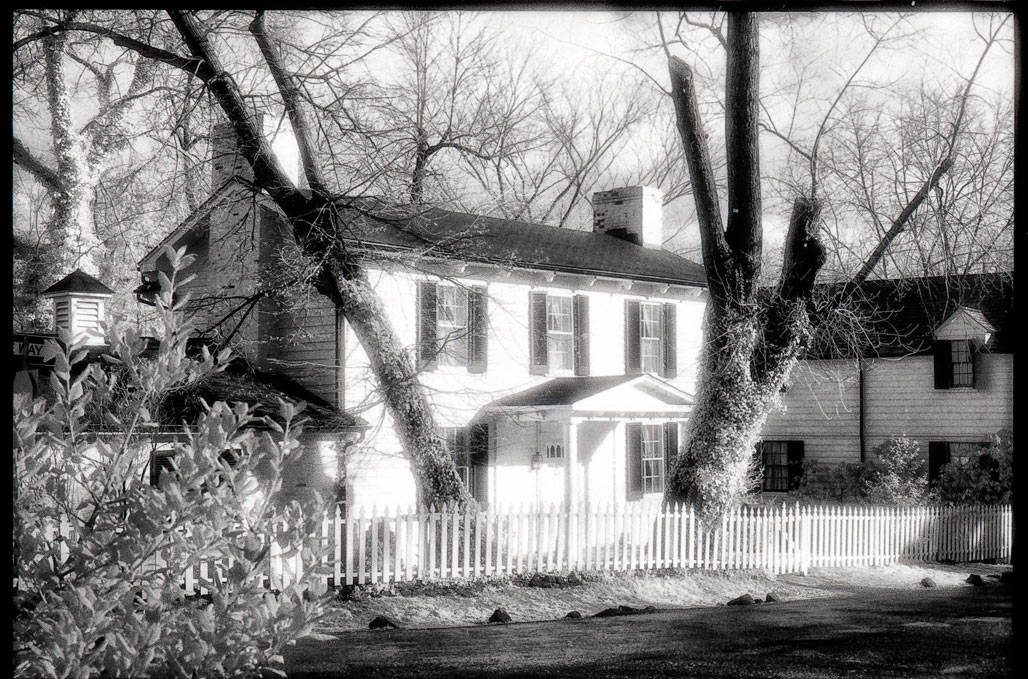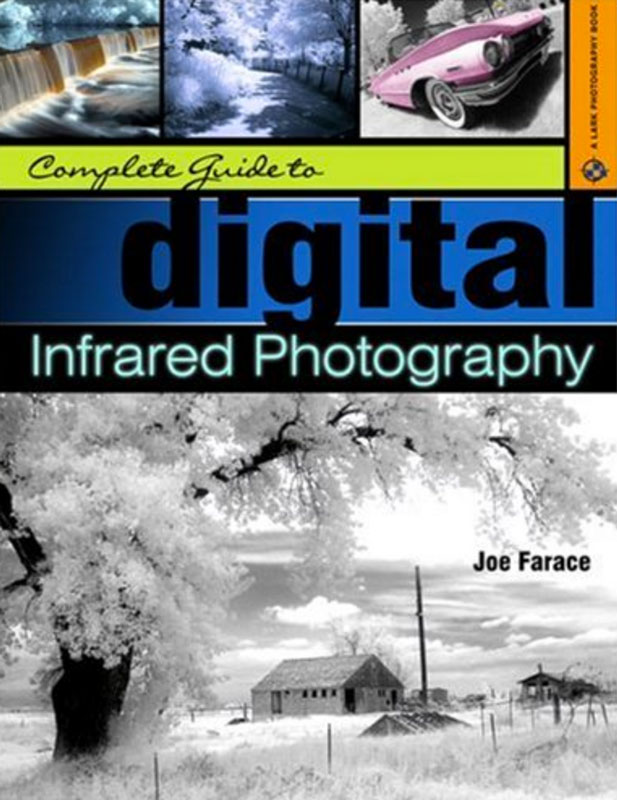Today’s Post by Joe Farace
“Wherever there is light, one can photograph”—Alfred Stiegletz
 Or not. Infrared light (sometime referred to as “radiation”) has some of the same properties as visible light. It can be focused and reflected like visible light and can be aligned and even polarized. Infrared film is sensitive to IR radiation, some ultraviolet radiation and to all of the wavelengths of visible light but is not as sensitive to green light.
Or not. Infrared light (sometime referred to as “radiation”) has some of the same properties as visible light. It can be focused and reflected like visible light and can be aligned and even polarized. Infrared film is sensitive to IR radiation, some ultraviolet radiation and to all of the wavelengths of visible light but is not as sensitive to green light.
Eastman Kodak previously offered a black and white infrared film called High Speed Infrared (HIE) that was as sensitive to the visible light spectrum (with decreased green sensitivity and infrared radiation up to 900nm as well as some ultraviolet radiation. On November 2, 2007, Kodak discontinued 35 mm HIE Infrared film stating, Demand for these products has been declining significantly in recent years…” I have a roll of HIE in my refrigerator with an expiration date of 1996. Question: Does expired infrared black & white film respond like conventional expired black & white film. Any body with thought or experience on this, please click CONTACT and let me know,
BUT you can still buy new IR film from Rollei and Ilford. Rollei’s Infrared 400 Black and White Negative Film has a sensitivity up to 820nm and an ISO of 400 without filtering. Proper exposures can also be reached by using infrared filters producing results with an unusual tonal range. Rollei claims that “special AURA effects” can be obtained by overexposing film but I am skeptical about that. The film has high contrast, grain and excellent sharpness and is well suited for scanning.
Ilford offers its SFX 200 film, a medium-speed film with peak red sensitivity to 720 nanometers, which can be extended to 740 nanometers by using a deep red filter (25A.) It has a nominal sensitivity of ISO 200 along with a wide exposure latitude and tonal range. More about nanometers (nm) and how that unit of measurement relates to infrared photography can be found here.
 How I made this photo: The image at left was originally captured on a wintry day in my former Baltimore neighborhood, the 200-year old village of Dickeyville, using Kodak’s black and white high-speed infrared negative film. The film was processed in my old darkroom aka my bathroom. This film frame was scanned as a positive image and converted into the image you see here. No exposure data was recorded.
How I made this photo: The image at left was originally captured on a wintry day in my former Baltimore neighborhood, the 200-year old village of Dickeyville, using Kodak’s black and white high-speed infrared negative film. The film was processed in my old darkroom aka my bathroom. This film frame was scanned as a positive image and converted into the image you see here. No exposure data was recorded.
The downsides: Infrared film must be loaded into your camera in complete darkness to prevent fogging. You will also have to unload the camera in total darkness too and, most likely, process it yourself. Historically infrared films have the reputation that they could not be processed in plastic tanks but the JOBO tanks I used back in the day have been tested to be compatible with IR films and seem to work just fine. Since many film changing bags are not opaque to IR radiation, your biggest problem will be loading the film onto the reels before processing which is best done in a proper darkroom, or in my case a bathroom in a darkened home at night, to adequately assure against fogging.
It’s been a while but when infrared season emerges in full bloom, I plan on shooting some Ilford and Rollei film and reporting abut it here in a future #filmfriday.
 I’ve found that Life Pixel does a great job with IR conversions and they’ve done conversions for some of my Canon DSLRs as well as all of my Panasonic Lumix G-series cameras, including a GX1 that uses their new Hyper Color conversion. This is not a paid nor sponsored endorsement, just my experience.
I’ve found that Life Pixel does a great job with IR conversions and they’ve done conversions for some of my Canon DSLRs as well as all of my Panasonic Lumix G-series cameras, including a GX1 that uses their new Hyper Color conversion. This is not a paid nor sponsored endorsement, just my experience.
My book, The Complete Guide to Digital Infrared Photography is available from Amazon for $55 with used copies starting around ten bucks, as I write this. Creative Digital Monochrome Effects has a chapter on IR photography and is available from Amazon with new copies at $5.95 with used copies starting at a little more than four bucks, as I write this.